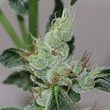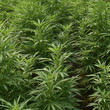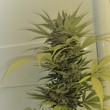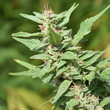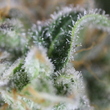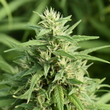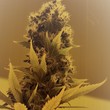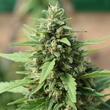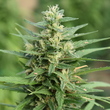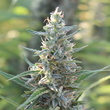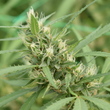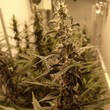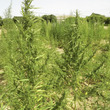Introduction
In vitro plant propagation allows to obtain in several crops a higher reproduction rate than the classic vegetative propagation methods, and also it permits to reduce the surface of the area designated for producing the mother plants and for rooting the cuttings. Also, in vitro rooted clones can be more easily transported and shipped abroad due to its sterility. One of the most limiting factors to tackle successfully the first in vitro introduction of a new cultivar is the different response to the addition of different sources of basal salts mixtures, vitamins, carbon, plant growth regulators, and gelling agents.
Material and méthods
The traditional and most used medium in plant tissue culture is the well-known Murashige and Skoog (MS) medium, consisting in a mixture of basal salts and vitamins. MS was compared to Formula β, an alternative basal salts mixture that has produced significant better results in previous studies on this crop. Axillary buds were harvested from young branches of a donor mother plant. Buds of each cultivar were plated onto MS basal salts medium, as well as onto a Formula β and onto a modified version of Formula β, defined as A. In our experiments, media were prepared by using, or not, Gamborg (B5) mixture of vitamins, and supplemented with 3% sucrose, 0.8% agar and at pH adjusted to 5.8. Two different combinations of phytohormones were used: meta-topoline vs. naphthaleneacetic acid + indole-3-butyric acid. Multiwell plates were incubated under an 18-h photoperiod at 25°C for a week, and continually monitored. The percentage of survival and germinated shoot tips was recorded, and results indicated that the success was cultivar-dependent
Results
The traditional and most used medium in plant tissue culture is the well-known Murashige and Skoog (MS) medium, consisting in a mixture of basal salts and vitamins. MS was compared to Formula β, an alternative basal salts mixture that has produced significant better results in previous studies on this crop. Axillary buds were harvested from young branches of a donor mother plant. Buds of each cultivar were plated onto MS basal salts medium, as well as onto a Formula β and onto a modified version of Formula β, defined as A. In our experiments, media were prepared by using, or not, Gamborg (B5) mixture of vitamins, and supplemented with 3% sucrose, 0.8% agar and at pH adjusted to 5.8. Two different combinations of phytohormones were used: meta-topoline vs. naphthaleneacetic acid + indole-3-butyric acid. Multiwell plates were incubated under an 18-h photoperiod at 25°C for a week, and continually monitored. The percentage of survival and germinated shoot tips was recorded, and results indicated that the success was cultivar-dependent
Discusion
In vitro micropropagation of explants depends on the genotype, surrounding environment and components (type and concentration) of the used tissue culture media, being the last the easiest to manipulate for improving in vitro introduction and culture, and successive stages of plants production. The most used basal salts medium for plant tissue culture (MS) is not always the best option, especially regarding the percentage of reactiveness of buds. Additionally, the old thesis of the mandatory addition of vitamins for achieving a proper in vitro growth and development of explants was not always true, as we have proved that most of the varieties survived and reacted better without the addition of MS vitamins. Similarly, the use of PGRs was also variety-dependent, indicating that some cultivars responded better to the addition of MT instead to NAA+IBA, or vice versa.
Other publications
See more
See more
See more
See more
See more
See more
See more
See more
See more
See more
See more
See more
See more
See more
See more
See more
See more
See more
See more
See more
See more
See more
See more
See more
See more
Ask for information
Can we be of help to you? Do you have any questions about us? Write to us and we will contact you as soon as possible.
